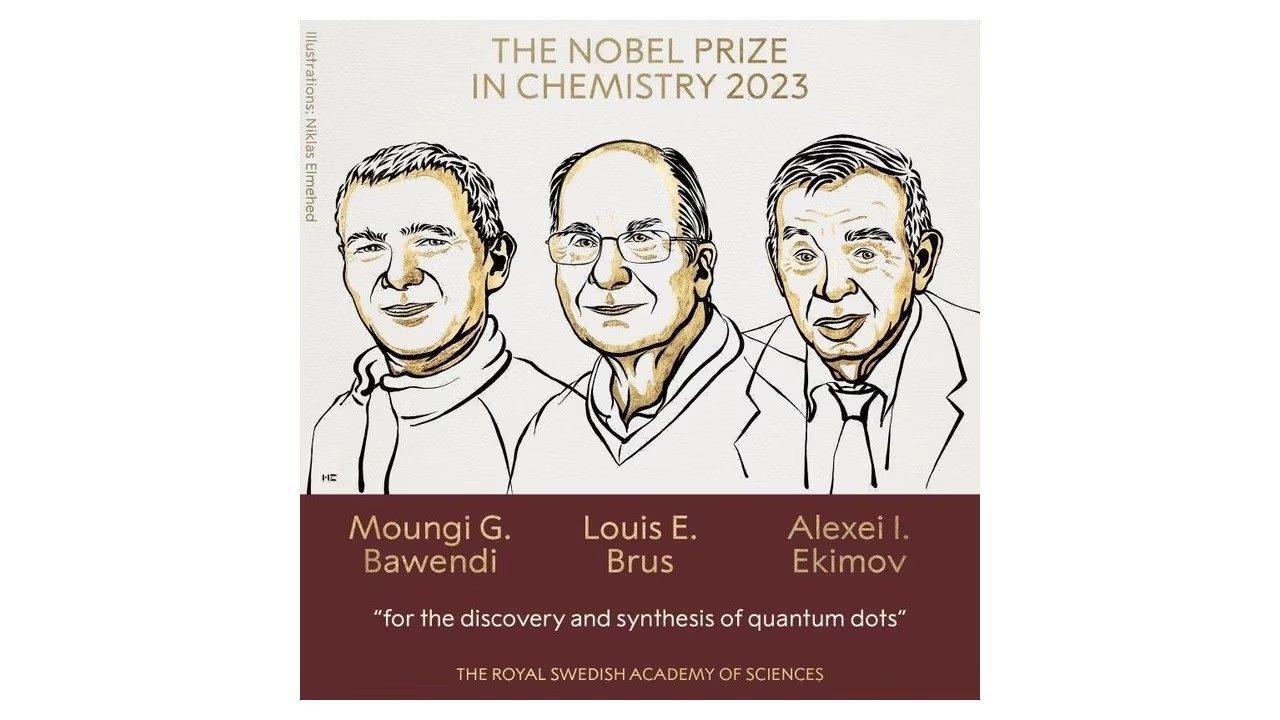
Quantum Dots (QDs)

06.10.2023
Quantum Dots (QDs) , Daily Current Affairs , RACE IAS : Best IAS Coaching in Lucknow
Why in the news?
Recently, the Nobel Prizes for 2023 in the field of Chemistry were announced by the Royal Swedish Academy of Sciences.
important point:
- The Royal Swedish Academy of Sciences has awarded Maungi G. from the Massachusetts Institute of Technology (MIT). Bawendi, Lewis E. Bruce from Columbia University and Alexey I. Ekimov, who worked in nanocrystal technology, were awarded the 2023 Nobel Prize in Chemistry.
- These people have been awarded the Nobel Prize 2023 in Chemistry for the discovery and synthesis of quantum dots.
- The prize money of 11 million Swedish krona will be shared equally among the three people.
About Quantum Dots (QDs):
- Quantum dots, also called "artificial atoms", are semiconductor nanoparticles that have unique optical and electronic properties due to their small size.
- These were first theorized in the 1970s and then successfully synthesized in the early 1980s.
- In the early 1980s, Ekimov succeeded in creating size-dependent quantum effects in colored glass. The color came from nanoparticles of copper chloride and Ekimov demonstrated that particle size affects the color of the glass through quantum effects
- Many semiconductor materials can be used as quantum dots, such as cadmium selenide, cadmium sulfide, or indium arsenide. Their nanoparticles, or any other semiconductor material, have the properties of quantum dots.
- The size and composition of quantum dots can be controlled during synthesis, allowing scientists to tailor their properties for different applications.
Features of quantum dots:
- One of the most remarkable features of quantum dots is their tunable emission properties.
- By controlling the size of quantum dots, researchers can precisely tune the wavelength of light emitted or absorbed.
- They can be engineered to emit light across the entire visible spectrum and in the infrared and ultraviolet ranges, offering a wide palette of colors for a variety of applications.
- The smallest quantum dots emit high energy waves and create blue light, and the largest dots emit low energy waves, creating red light, with sizes in between creating colors in between.
Uses of quantum dots:
- One of the most common uses of quantum dots is to light up computer monitors and television screens. Blue LEDs behind the screen excite these dots, causing them to emit different colors of light. The combination of these colors creates even more color and brightness.
- Compared with organic luminescent materials used in organic light-emitting diodes (OLEDs), QD-based materials have purer colors, longer lifetimes, lower manufacturing costs, and lower power consumption.
- Photovoltaic: Quantum dots are also used in photovoltaic cells.
- Uses in Medicine: The small size of quantum dots allows them to go anywhere in the body, making them suitable for various therapeutics such as medical imaging, biosensors, targeted drug delivery, etc.
- It is also used by biochemists to map biological tissues.
- Quantum computing: Quantum dots are being investigated for their potential role in quantum computing, as they can serve as qubits, fundamental units of quantum information.
Quantum dots can be used as security markers on currency and documents, making it possible to identify counterfeit currency. Broadly speaking, these can be used as fluorescent markers to tag and track objects.